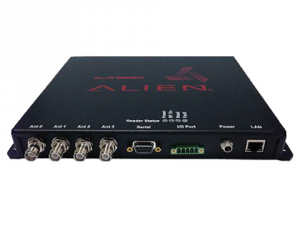RFID, or radio frequency identification, works on several different frequencies. Understanding the differences between these frequencies and their ranges not only helps you choose the right RFID technology to meet your needs, but also helps ensure that all of your components will work together.
Before we get into looking at the different RFID frequencies, it’s important to understand how frequency and wavelengths relate to one another. The higher the frequency, the shorter the wavelength; the lower the frequency, the longer the wavelength.
What does this mean?
- Shorter wavelengths travel faster, and longer wavelengths travel slower.
- Longer wavelengths can travel faster than shorter wavelengths.
If you want to learn more about radio wavelengths and physics, check out this handy resource. Below, find details about each frequency range. We’ve also highlighted some products you should check out.
Please note that the ranges listed below might vary slightly depending on deployment country.
Low Frequency (LF) RFID
- Range: 30-300 kHz
- Tag Usage: Animal-tracking systems make use of low frequency RFID tags.
- Read range: 10 centimeters
 High Frequency (HF) RFID
High Frequency (HF) RFID
- Range: 3-30 MHz
- HF RFID Tag: The HID IN Tag 500
- Tag Usage: RFID tags in the high frequency range are great for library circulation, ticketing, and payment applications, for example.
- Read range: 10 centimeters – 1 meter
Ultra-high Frequency (UHF) RFID
- Range: 300 MHz-3GHz
- UHF RFID Reader: The Alien ALR-9680
- Tag Usage: Ultra-high frequency RFID tags are great for managing inventories, configuring wireless devices, and more.
- Read range: Up to 12 meters
Choosing the Right RFID Components
The RFID frequency you choose might depend on many factors, but your purpose will likely be the driving factor behind your decision. The best way to make the right decision is to educate yourself on the different types of RFID. In addition to frequency, there are other considerations, such as the following:
- Do you need passive or active RFID?
- Which RFID components do you need to meet your needs?
- Are you in a rugged environment?
- Will you utilize handheld or fixed RFID readers?
- What is your budget for RFID technology and software?
- What type of RFID antenna do you need—near- or far-field?
The good news is that you don’t need to feel overwhelmed. Because RFID components come in so many different variations, you’ll be able to build an RFID system that will meet your needs, whether you’re tracking pets, computers, marathon-runners, LPG canisters, or more. Start with what you need to accomplish, and build your RFID system from there. If you need help, you can contact Gateway RFID Store to chat with an expert.

